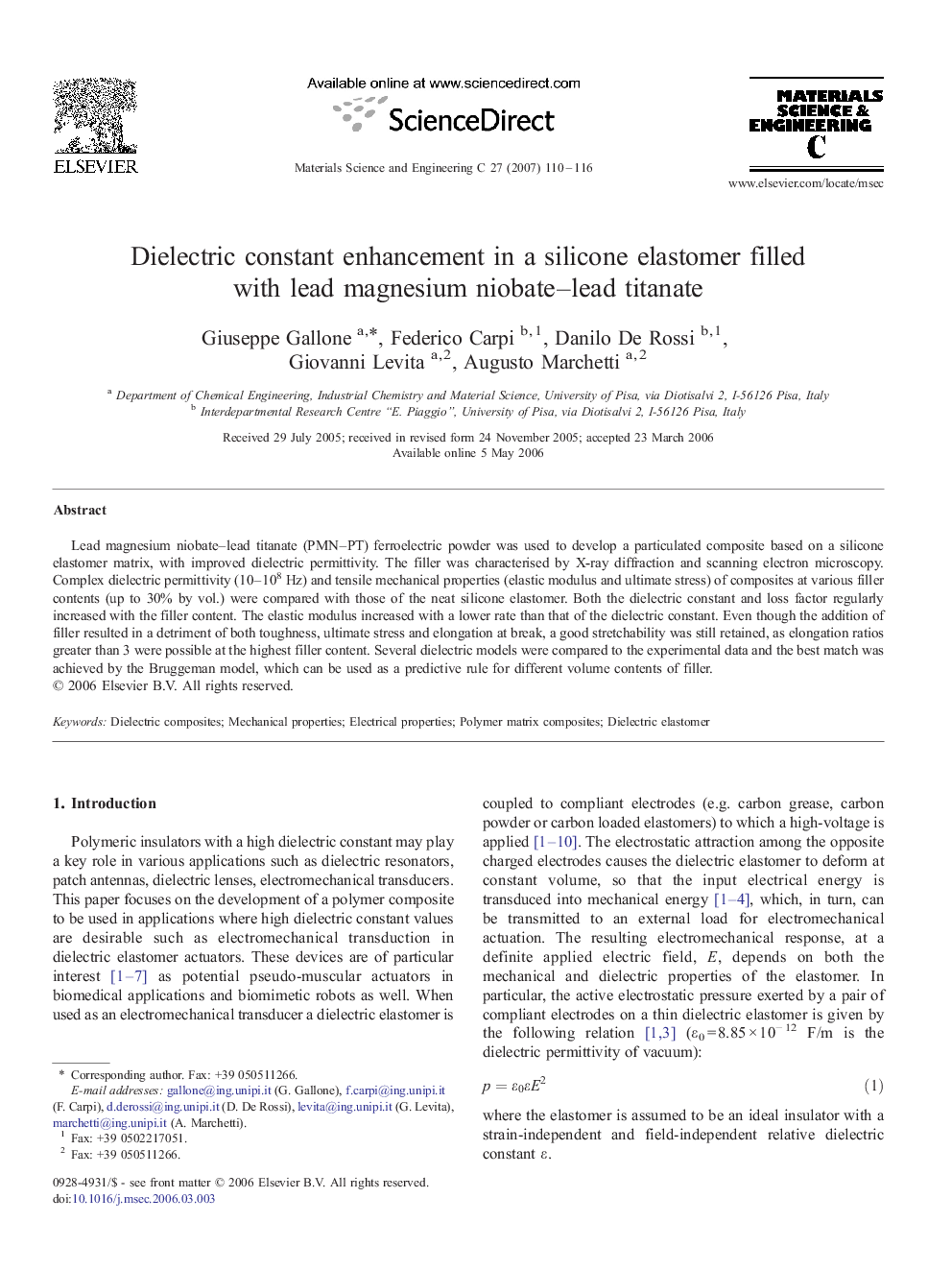| Article ID | Journal | Published Year | Pages | File Type |
|---|---|---|---|---|
| 1430408 | Materials Science and Engineering: C | 2007 | 7 Pages |
Lead magnesium niobate–lead titanate (PMN–PT) ferroelectric powder was used to develop a particulated composite based on a silicone elastomer matrix, with improved dielectric permittivity. The filler was characterised by X-ray diffraction and scanning electron microscopy. Complex dielectric permittivity (10–108 Hz) and tensile mechanical properties (elastic modulus and ultimate stress) of composites at various filler contents (up to 30% by vol.) were compared with those of the neat silicone elastomer. Both the dielectric constant and loss factor regularly increased with the filler content. The elastic modulus increased with a lower rate than that of the dielectric constant. Even though the addition of filler resulted in a detriment of both toughness, ultimate stress and elongation at break, a good stretchability was still retained, as elongation ratios greater than 3 were possible at the highest filler content. Several dielectric models were compared to the experimental data and the best match was achieved by the Bruggeman model, which can be used as a predictive rule for different volume contents of filler.
